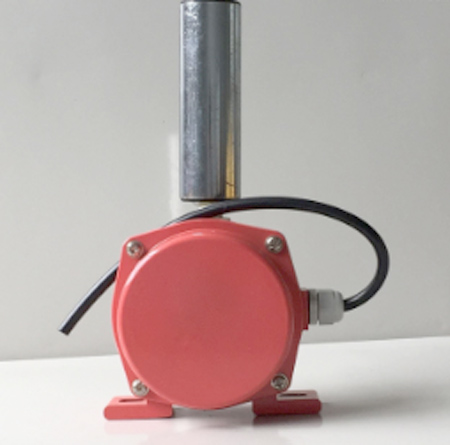
Product Overview:
The two-stage deviation switch XT-PK-20-35 is a safety protection device designed specifically for belt conveyor systems, with two-stage alarm functions for real-time detection of belt deviation. This switch can issue a warning signal when the belt deviates, and trigger a secondary alarm or shutdown control when the deviation situation worsens, effectively preventing equipment damage and production accidents, and improving the safety and reliability of the conveyor system.
Product features:
Technical parameters:
working principle:
The XT-PK-20-35 deviation switch is installed on both sides of the conveyor belt. When the belt deviates from the normal track and touches the action rod of the switch, the internal mechanism of the switch will trigger the first stage alarm, reminding the operator to pay attention to the belt deviation situation. If the offset situation persists or worsens, the switch will trigger a second stage alarm or automatic shutdown to ensure the safe operation of the system.
Installation and Debugging:
Application scenarios:
Maintenance and upkeep:
matters needing attention:
Conclusion:
The two-stage deviation switch XT-PK-20-35 has advanced dual alarm function and high sensitivity design, which can provide comprehensive safety protection for the belt conveyor system. Its sturdy and durable structure and wide working temperature range have made it widely used in industries such as mining, power, metallurgy, and logistics. Through timely warning and automatic control, it greatly improves the safety and operational efficiency of the system.
1. How does the dual alarm function of the two-stage deviation switch XT-PK-20-35 work?
XT-PK-20-35 has two-level alarm function. When the conveyor belt deviates and touches the action lever of the switch, the switch will trigger the first stage alarm, emit an alarm signal, and remind the operator to pay attention to the belt deviation. If the offset situation persists or intensifies, the switch will further trigger a second stage alarm or automatic shutdown, providing additional protection. This dual alarm mechanism can effectively prevent equipment damage and production accidents, and enhance the safety of the system.
2. How to adjust the action angle of the two-stage deviation switch XT-PK-20-35?
To adjust the action angle of XT-PK-20-35, first find the angle adjustment screw on the switch. Then, adjust the angle range between 20 ° and 35 ° based on the actual operation of the conveyor belt. Ensure that the adjusted angle can trigger an alarm in a timely manner when there is a slight deviation in the belt. Appropriate adjustments can avoid false alarms or missed alarms, thereby ensuring the effectiveness of the switch in actual operation.
3. What are the installation and maintenance precautions for the two-stage deviation switch XT-PK-20-35?
When installing XT-PK-20-35, choose key positions where the belt is prone to deviation, such as near the tensioning device or in the middle of the conveyor belt. Ensure that the switch is securely installed to avoid positional displacement caused by vibration or external forces. Wiring should be strictly carried out in accordance with electrical specifications to ensure the stability of electrical connections. Regularly inspect and clean the switch to maintain its normal working condition. At the same time, regular functional testing should be conducted to ensure that the switch can respond promptly to deviation situations in actual use.